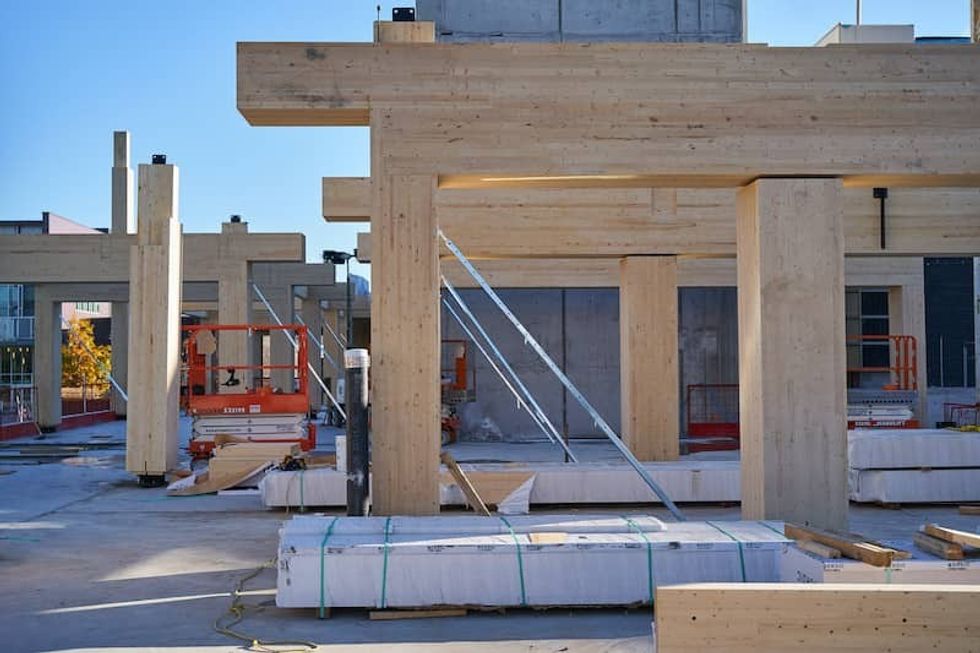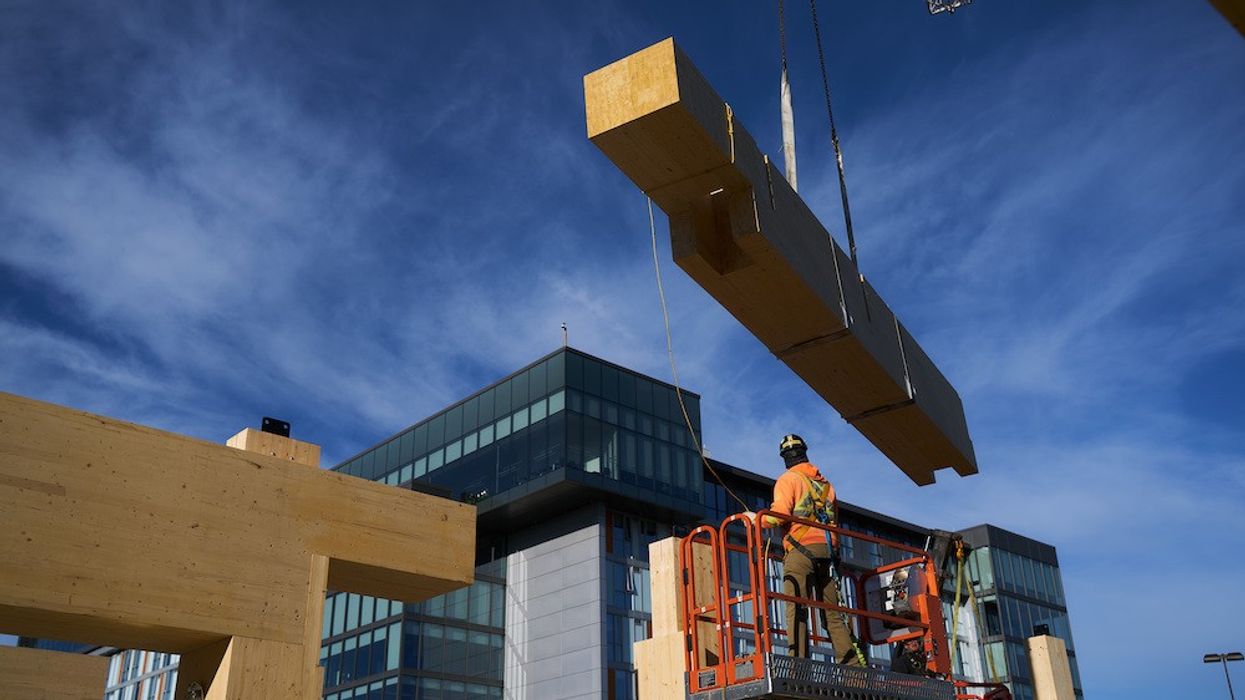Toronto builders have a challenging task ahead of them, and with a rapidly approaching deadline: constructing all new buildings with near-zero greenhouse gas emissions by 2030.
As part of the TransformTO Net Zero Strategy that would see the city bring its emissions to net zero by 2040, the mandated shift takes aim at the sizable chunk of emissions that buildings produce. Recent data on the Greater Toronto Hamilton Area (GTHA) found that buildings are responsible for a staggering 44% of all emissions -- much higher than any other industry, including transportation or agriculture.
Making the greener shift will by no means be easy (or cheap) for most Toronto builders, but EllisDon feels more than prepared to meet the challenge. The well-known Mississauga-based construction company has been shaping Canadian real estate for decades, having even recently branched into the development sector.
Now, they're ready to help bring it into a much more sustainable future.
With emissions coming from both the construction process -- including from the materials used -- and the continued operation of a building once it's complete, there's no one quick fix. Rather, builders are going to need to implement a series of industry-wide fixes, and quickly, to get themselves where they need to be.
EllisDon's Director of Corporate Sustainability, Jolene McLaughlin, says the company has been working hard to implement innovative techniques to make their developments some of the most sustainable in Canada. And now, after years spent spearheading these progressive practices, demand for such services is on the rise from clients, too.
"In 2018, we started to see a real increase in projects that were looking for zero carbon emissions," McLaughlin said. "It's relatively recent, but it's been exponential since then. We had two or three projects coming up with these kinds of emissions requirements, and now we have 15 or 20 on the books."

The GTHA data revealed that although 71% of building emissions come from the natural gas that's used on-site for heating, the materials selected during the construction process also play a big role that can't be ignored. In fact, the World Green Building Council similarly found that nearly 30% of all building emissions around the world were from materials and construction. McLaughlin says EllisDon has been working on this issue for several years, placing them well ahead of the curve.
"We started to improve our knowledge, and we started working with people like Construction Sciences Director Mark Gaglione and his Building and Material Sciences team to really understand what's happening in the materials space. What can be done to reduce emissions? How can we make sure that we're increasing the supplementary cementitious materials instead of using just cement?"
This change in cement usage is just one of the solutions identified by EllisDon's Construction Sciences division -- one of the few divisions of its kind in the industry, dedicated entirely to keeping EllisDon at the forefront of construction innovations.
"It's really hard to get away from the carbon impact of concrete, but there are incremental advances in, say, taking out half the cement and putting in something else that's not cement, but still can react," Gaglione said. "Depending on where you are in Canada, it can be something called fly ash, slag, or silica fume, and these aren't necessarily things that you have to manufacture -- these are waste products from other manufacturers like steel or coal.”
In essence, he explains, “you're taking the waste from one industry and putting it into concrete; these are things that are all happening simultaneously to help us make our concrete more sustainable."
This article was produced in partnership with STOREYS Custom Studio.





















